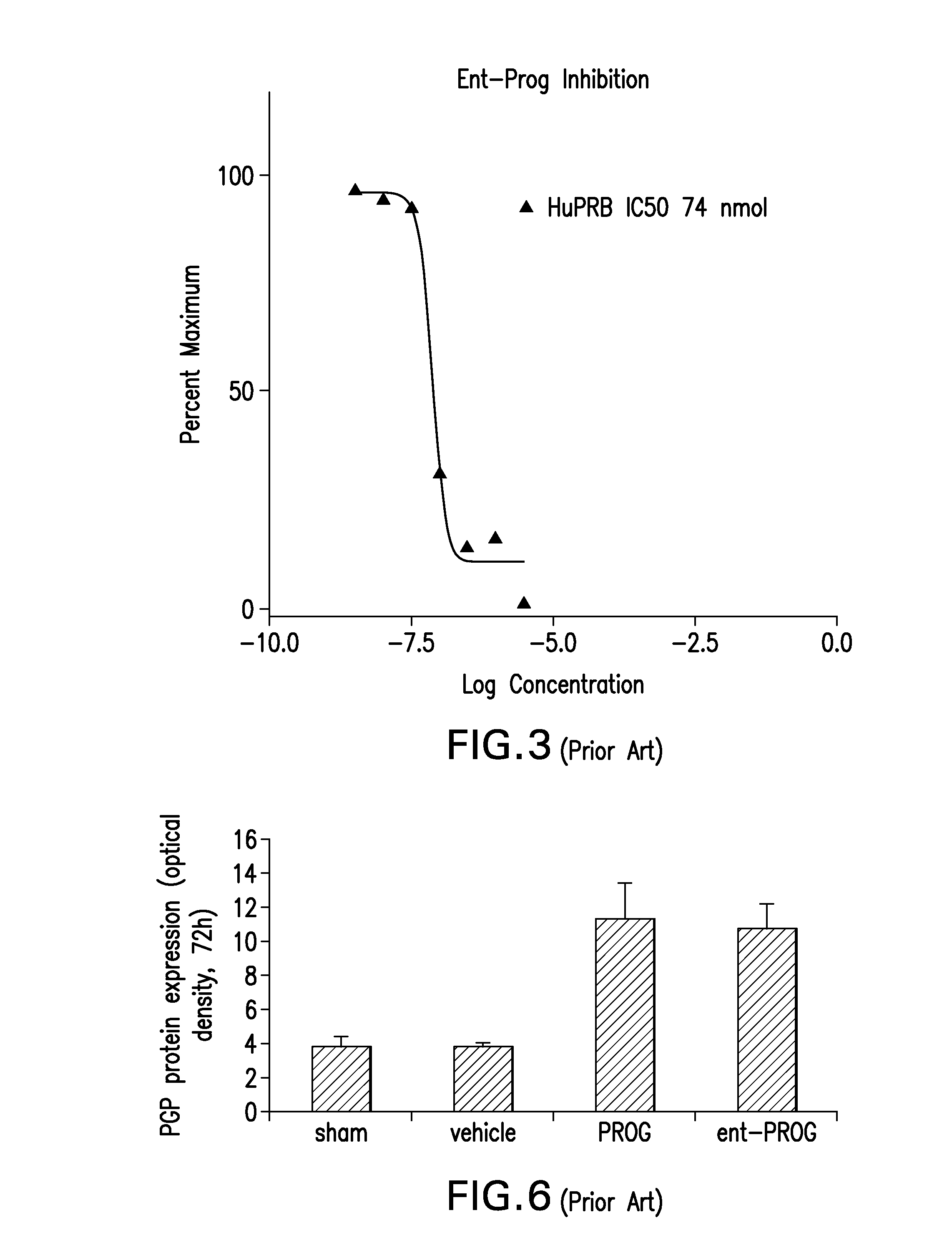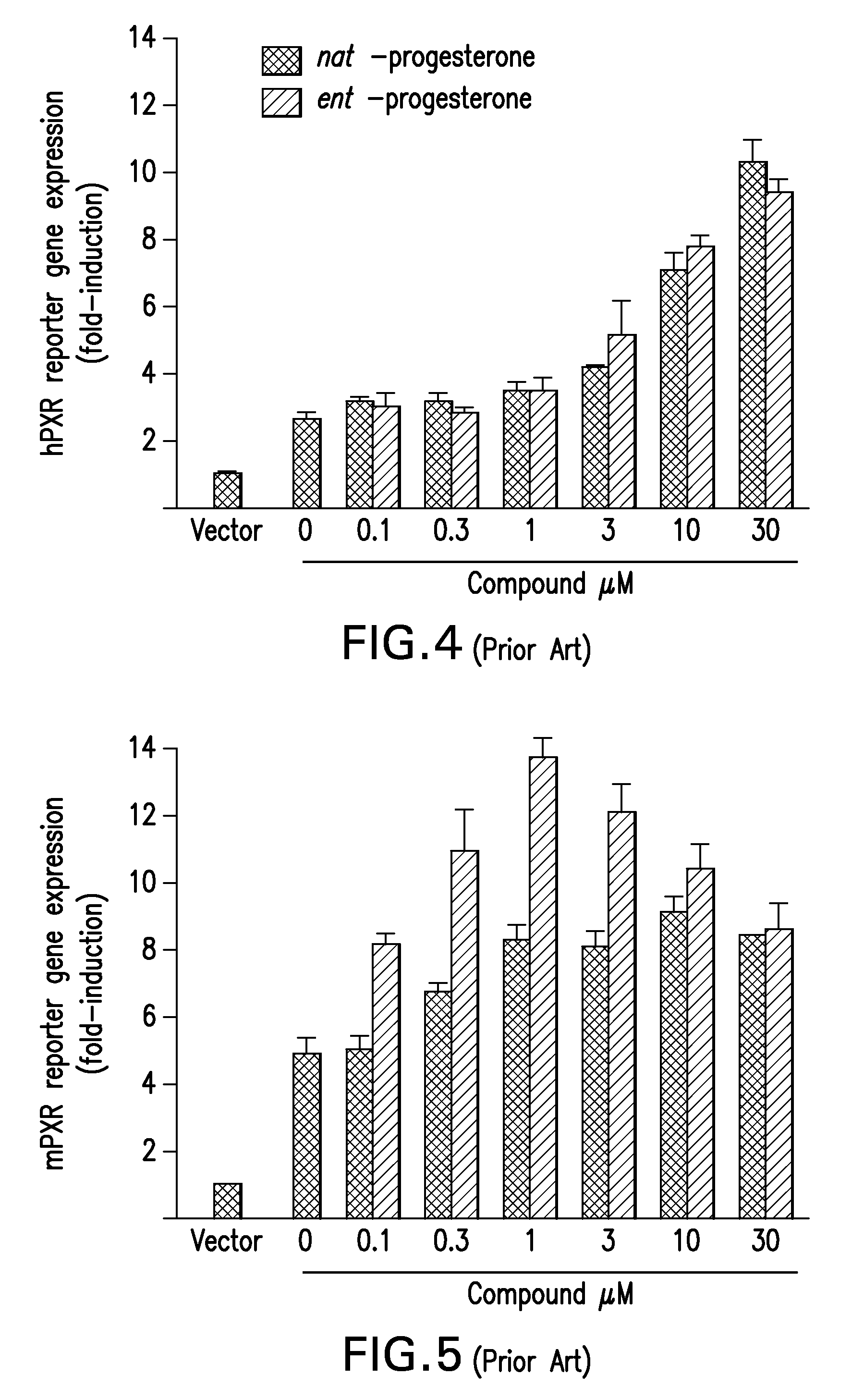Nasal delivery mechanism for prophylactic and post-acute use of progesterone and/or its enantiomer for use in treatment of mild traumatic brain injuries
a delivery mechanism and a technology for traumatic brain injuries, applied in the field of nasal delivery mechanism for progesterone and/or its enantiomer for use in the treatment of mild traumatic brain injuries, can solve the problems of half the deaths of elderly people caused by falls, and achieve the effects of improving coagulation, improving plasma turbidity, and improving delivery
- Summary
- Abstract
- Description
- Claims
- Application Information
AI Technical Summary
Problems solved by technology
Method used
Image
Examples
example 1
Specific Aims
[0089]Three specific aims are tested by Magnetic Resonance Imaging (MRI), behavioral testing and molecular analyses: (1) In order to evaluate a decrease in diffuse axonal injury, MR images are taken of the injured brain for Prog treated animals and compared to vehicle control groups at 24 hours and five days after injury. It is hypothesized that the lesion size in the right frontal cortex and diffuse axonal injury of processes connecting the right frontal cortex to the temporal cortex is reduced in treatment compared to the vehicle control group. (2) The animals also undergo behavioral tests for the first five days following injury including: water maze (learning, memory and anxiety-like behaviors and a balance beam (motor coordination). It is hypothesized that animals in the Prog treated group will achieve better post-injury functioning than the vehicle control group animals. (3) At 24 hours and following completion of the behavioral testing (five days), the animals ar...
example 2
Summary
[0101]Prog and ent-Prog are administered both intranasally (IN) and intraperitoneally (IP) to both male and female Sprague Dawley Rats. These neurosteroids are used as a daily treatment for two, four and eight weeks. The outcomes of neurosteroid-treated rats with vehicle (vehicle-treated) and sham (untreated) rats will be compared. The sexual side effects in male and female rodents, as well as the coagulative effects in male rodents will also be investigated.
Specific Aim 1
Evaluating Male Sexual Function after Repeated Neurosteroid Treatments
[0102]In order to evaluate male sexual function following treatment, rodents are evaluated and compared to vehicle control groups at the end of 2 and 4 weeks. Male rodents are divided into 20 groups (n=3): daily Prog treated IP and IN at both 16 mg / kg and 32 mg / kg for 2 and 4 weeks; daily ent-Prog-treated IP and IN at 16 mg / kg and 32 mg / kg for 2 and 4 weeks; daily vehicle-treated for 2 and 4 weeks; and sham (untreated) for 2 and 4 weeks. S...
example 3
Specific Aim 1
Determine the Intraperitoneal Dose and Time at which Prophylactic and Post-Acute Treatments with Progesterone and its Enantiomer Improve Responses to Mild Traumatic Brain Injury
[0111]The efficacy of ent-Prog treatment for mTBI is determined and compared with natural Prog treatment. Based on past research with these two neurosteroids in a model of moderate to severe TBI it is hypothesized that an IP dose of 16 mg / kg at 1 hour after injury will provide optimal protection following mTBI. With regards to prophylactic treatment this same dosage will be most beneficial when given between 1 hour and 15 min prior to induction of mTBI based on previous research showing this timeframe to offer the optimal bioavailability of Prog. Furthermore, it is hypothesized that Prog and ent-Prog will equally improve responses to mTBI with greater efficacy seen with prophylactic administration. mTBI is induced in rats using a novel animal model applying closed head trauma to the right fronta...
PUM
 Login to View More
Login to View More Abstract
Description
Claims
Application Information
 Login to View More
Login to View More - R&D
- Intellectual Property
- Life Sciences
- Materials
- Tech Scout
- Unparalleled Data Quality
- Higher Quality Content
- 60% Fewer Hallucinations
Browse by: Latest US Patents, China's latest patents, Technical Efficacy Thesaurus, Application Domain, Technology Topic, Popular Technical Reports.
© 2025 PatSnap. All rights reserved.Legal|Privacy policy|Modern Slavery Act Transparency Statement|Sitemap|About US| Contact US: help@patsnap.com



